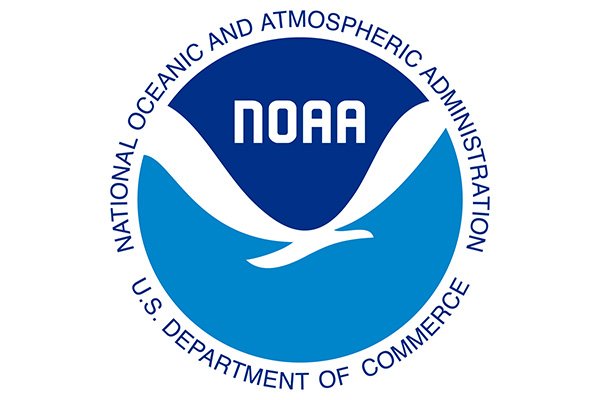Planning for Change
Identifying and planning adaptation actions.
As climate impacts on fisheries emerge and become larger in their effect, the importance of planning for adaptation increases. Adaptation helps lessen exposure through buffering impacts and reducing risk. Adaptation actions can be undertaken at a range of scales and levels, and should be flexible enough to adjust to further changing conditions and circumstances.
In brief:
- While fishers routinely adapt to on-the-water changes, climate change will pose new and additional challenges for harvesters, fishing industries, and fishing communities.
- Identifying potential adaptation actions to adjust to projected climate impacts or emerging opportunities is crucial for supporting resilient fishing communities.
- Adaptation in fisheries can include individual action, community and industry initiatives, and management and regulatory changes.
The need for adaptation
As climate impacts on marine fisheries materialize or become of greater concern, adaptation planning increases in importance. Adaptation helps to temper exposure through buffering impacts and reducing risk.
Adaptation encompasses a range of actions and strategies that can help moderate harm or capitalize on beneficial opportunities associated with climate change (IPCC, 2022). Adaptation actions can span a spectrum of complexity at multiple time scales. Intentional, planned adjustments to changes that have been experienced or are expected can support adaptation within current fishery systems. In some cases, more transformative responses are necessary to change the current system so it can support greater responsiveness or resilience, or to achieve different goals. Implementing transformational strategies often requires institutional or cultural changes that extend beyond the fishery system, and occur at regional, federal and international levels as appropriate.
Adaptation actions and options
There are a wide range of adaptation strategies and actions available that will depend on individual goals, regional relevance, community context, and management or governance frameworks. Some of these may be easier to implement than others, depending on the scale at which they need to occur, their time frame, cost, and number of actors involved. Adaptation responses are needed throughout all levels of the fishery system and cannot fall on individuals alone. Coordinated planning and action that involves community partners, municipal agencies, and fishery management bodies will most effectively build climate resilience for fishing communities. Importantly, adaptation has no end point. As the climate continues to change, new impacts will occur, which means that adaptation actions will need to be re-evaluated and revised.

Through a combination of stakeholder conversations, literature reviews, and signposting of additional tools, we outline examples of overarching strategies and actions fisheries stakeholders may wish to consider.
We've aggregated the adaptation actions outlined below in this report. These actions should not be viewed as an exhaustive list, rather they represent a selection of potential ideas. Many other examples are not listed, and original approaches may arise within the context of community planning processes.
Example adaptation approaches and strategies
Fishing changes
- Shifting fishing locations
- Shifting harvested species (as existing permits/allocations allow, or through seeking out new permits)
- Diversifying livelihoods (alternative fisheries, aquaculture, non-fishing jobs)
Industry actions
- Improving product handling
- Developing supply chain capacity
- Diversifying marketing and building consumer demand
Community actions
- Maintaining and securing shoreside infrastructure and access
- Improving transportation networks
- Developing local seafood initiatives
- Conducting vulnerability and resilience assessments
- Using early warning monitoring
- Engaging communities in adaptation and resilience planning
Management measures
- Reassessing quota allocations
- Altering permit access and availability
- Developing adaptive reference points
- Applying dynamic and ecosystem-based management
Selecting and prioritizing adaptation options
A number of considerations shape the selection of adaptation actions. Importantly, their effectiveness in meeting pre-defined goals, and their ability to reduce impacts of concern should be central to decisions of which actions to prioritize. It is also necessary to consider whether appropriate resources–financial, knowledge, skills, and capacity–are available to implement specific options. A critical part of selecting and prioritizing adaptation options entails examining the cost-benefits and trade-offs that arise in selecting particular strategies. Trade-offs can be ecological, social, economic or institutional in nature.
Additionally, attention to the equity implications of different adaptation actions is important to minimize harms and avoid (further) marginalization or disenfranchisement of particular groups of people, including Indigenous communities. All types of knowledge, including for example scientific information, local ecological knowledge and Indigenous knowledge, should be used to guide adaptation decisions, but depends on participation and permission from these groups. Transparency in how options are selected and prioritized is critical to help promote buy-in and reduce conflict among different stakeholders. As such, participatory and collaborative decision-making processes are well-suited for selecting and implementing adaptation strategies.
Useful resources and tools
Managing change
After identifying potential adaptation options, it's important to identify how change will be managed.
Go back to Climate Adaptation Planning for Fishing Communities homepage.
Staff Contact
Please contact Dr. Kathy Mills with any questions.
Project Sponsor
The information within this site was developed with funding from the National Oceanic and Atmospheric Administration’s Climate Program Office under awards NA15OAR4310120 and NA19OAR4310384.
Read More
-
![New: Climate & Fisheries Planning Tool]()
New: Climate & Fisheries Planning Tool
The Science for Nature and People Partnership (SNAPP) working group on climate-resilient fisheries, led by GMRI Senior Research Scientist Dr. Kathy Mills, recently developed a …
Tidings
-
![Gulf of Maine, Explained: Storms and Coastal Flooding]()
Gulf of Maine, Explained: Storms and Coastal Flooding
In this edition of Gulf of Maine, Explained, GMRI Postdoctoral Researcher and coastal hazards expert Dr. Hannah Baranes talks about how we can use the …
Gulf of Maine, Explained
-
![FishSCORE2030: Supporting Climate-Resilience in Fisheries]()
FishSCORE2030: Supporting Climate-Resilience in Fisheries
GMRI Research Scientist Dr. Kathy Mills is leading a new collaborative effort to build an international network of scientists, stakeholders, and practitioners who will identify …
Tidings
-
![2023 Research Progress Update]()
2023 Research Progress Update
Each year, to keep you updated on our research team's progress, we develop a report showcasing some of our lab's achievements. More broadly, this report …
Reports




